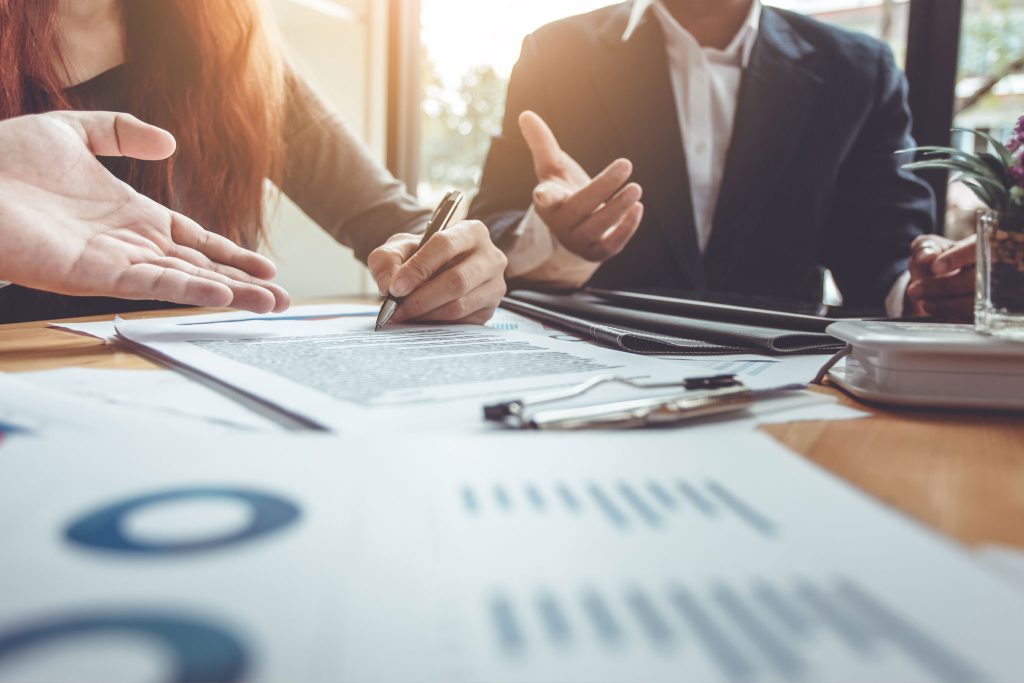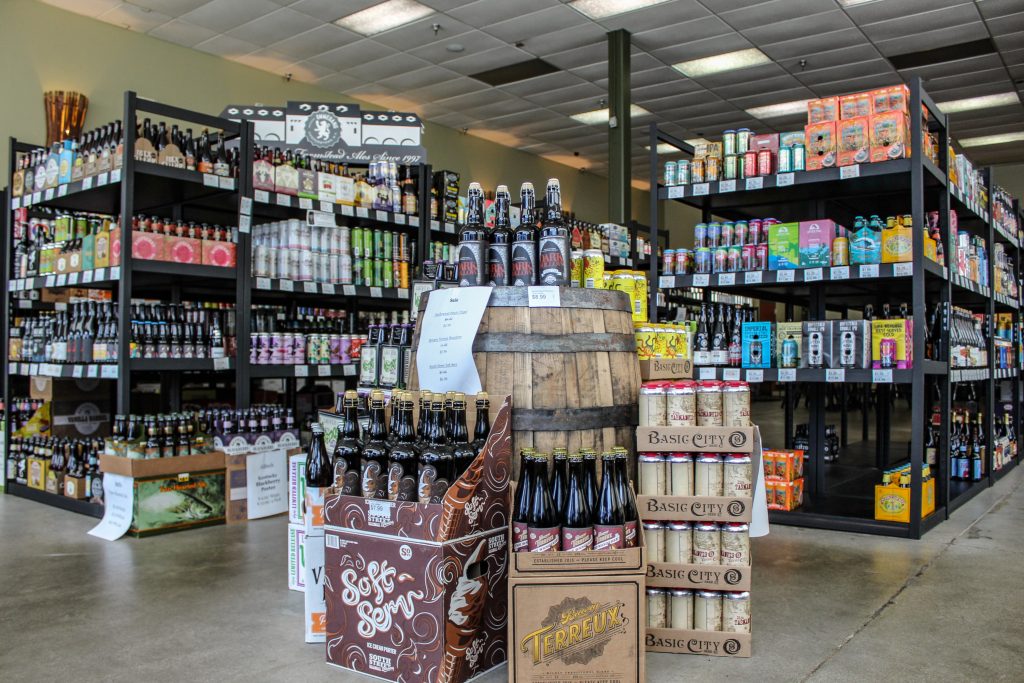
By: Gerald Dlubala
At six years old, Justin Stiefel, CEO of Heritage Distilling Company (HDC), was watching reruns of MASH with his father and wanted to know what the contraption was that the characters were constantly hanging around and pouring drinks from in their army tent. That contraption was a hand-made still, and among other things, it fueled Stiefel’s interest in chemistry and engineering. His interest culminated in Stiefel submitting a working model of a still for his seventh-grade chemistry class experiment. While he obviously couldn’t partake in any experiments from his submission, his teacher happily accepted the challenge, deeming it a worthy working model and giving Stiefel top grades for his project.
“That accomplishment felt good,” said Stiefel. “I became interested in chemistry in that process, and since distilling is a chemical process at its basic level, my interest in distilling naturally grew.”
After adding a degree in chemical engineering, he and his wife Jennifer, president of HDC, founded Heritage Distilling Company in 2011 while sitting around a campfire with whiskey, cigars, good friends and family. The name Heritage came from Stiefel’s belief that no matter who we are, where we are or where we’re from, our story, state or background, we all have a shared heritage as a country and an individual heritage based on our experiences. So the word “heritage” captures all those spirits and everything around us into one customer experience that we provide.
Later, as he and Jennifer both gained experience working in the U.S. Senate, Justin attended Law School and was ultimately put in charge of negotiating important issues and subsets related to native tribes, including reviewing past policies, academic advancement, job creation, investment issues and more.
“Subsequently, Jennifer and I enjoyed visiting the breweries and wineries for the relaxing vibe and experience, but it was never legal at that point to open distilleries until 2009 when the state of Washington legalized the process. It was noticeable from the brewery and winery experiences what benefits were available in agricultural and economic factors using local resources by allowing folks like us to open craft distilleries. Then, in 2011, when we moved back to Washington, where we grew up, Washington voters approved privatizing liquor distribution systems.”
The Stiefels’ approach to opening a craft distillery is first to consider what consumers want rather than what they prefer to drink.
“A distiller can’t fall in love with their own products,” said Justin. “If you’re opening a brewery, winery, or distillery because you love your beer, wine or spirits, that can be a recipe for disaster. If you enjoy the product that much, be satisfied with being a consumer and drink the things you like. We use a consumer-led, high-technology approach to every aspect of our distilling process, start to finish. We want to focus on what compels a consumer to choose any particular product because you only get that one shot with a consumer to trigger repeat purchases. No matter our approach, it always started and ended with the product’s taste and flavor profile. Using this approach, we’ve become the most awarded craft distillery for nine years running, per the American Distilling Institute.”
“We like to say that if it isn’t in the bottle, it doesn’t belong on the shelf,” said Jennifer. “The final products are determined in double-blind taste tests, and our spirits’ taste profiles can take up to two years to reach the point of release. We include natural ingredients and processes, including our grain and mash, and tailor them to the consumer’s needs. We have experienced, trustworthy palettes and pride ourselves on our spirits’ taste, flavors and profiles. We have internal and external protocols for testing, including blind taste tests with unknowing consumers. Those consumers are the final gatekeepers of our products, and they’ll let us know when our product is ready. We import all of our distilling equipment from Italy simply because we’ve found that equipment produces the most amazing flavor profiles for us.”
Stiefel tells Beverage Master Magazine that the six distilleries and tasting rooms HDC owns throughout Washington and Oregon serve as testing grounds for all products, including their homemade RTDs (Ready to Drink).
“We get our consumers in the door, have them do a taste trial, and hopefully convert those tastings to purchases or membership program subscriptions,” said Stiefel. “For example, we offered free samples of our newly launched RTDs in our tasting rooms in return for an in-house completion of a 27-part questionnaire regarding their honest thoughts on the products. Our guests took an average of 27 minutes to complete those questionnaires. They provided informative and thoughtful responses and proved they were interested in helping us make product decisions and being part of the consumer journey with us.”
Stiefel says that HDC has streamlined its processes and protocols for consistency, record keeping, compliance, and general tracking in case of a problem. They can track back to the particular release’s specifics and find the issue’s where, when and why.
“It’s a personal development journey as well as a consumer journey,” said Steifel. “We have 10 years of experience in consistent production, successful policies and responsible behaviors. And we believe everyone opening a craft distillery is obliged to the industry, striving to provide excellence and total responsibility within this still-young industry.
Tribal Beverage Network: Turnkey Solutions with Individual Branding
“There are 270 tribal, sovereign nations in the lower 48 states,” said Stiefel. “Because of our record of successful practices and responsible policies in opening craft distilleries, the Chehalis Tribe in Southwest Washington approached us to see if we would help them open a craft brewery and taproom with a new hotel development they had in the works. We explained that we are craft spirits producers, not brewery professionals. Additionally, we explained that, in our informed opinion, the craft brewery market is beginning to downsize, so if they wanted to pursue that market, we recommended that they go with a dual component facility that includes craft spirits.”
The Chehalis Tribe agreed, and in partnership with HDC, they were on their way to an exciting and extensive 25 million, 36,000-square-foot project when the unthinkable occurred.
“We were due for groundbreaking in February 2018 and 24 hours away from issuing the contract, complete with equipment on site ready to begin when we were issued a letter halting the project,” said Stiefel. “Citing a 1934 statute from the Andrew Jackson era, the letter stated that a distillery cannot be built on tribal land, and if it were, we would not only be subject to a $1,000 fine (a great amount back then), but the government had the right to destroy all related equipment, including the stills legally.”
“Fast forward 184 years, and we now see that many tribes own and operate casinos, bingo halls, golf courses, resorts, entertainment venues and arenas,” said Stiefel. “In fact, there are currently 524 tribally owned casinos in the lower 48 states, including some of the biggest properties and wine and beer distributors in their respective cities. They are the largest operators in their respective areas except for some Vegas casinos, but in many cases, tribal casinos are bigger than their Vegas counterparts. So, we felt that this 1934 era statute was no longer applicable and decided to do something about it.”
In April, the Stiefels introduced a bill to repeal the antiquated statute, and it was passed and signed into law by December of the same year. Their argument was simple and on point. Craft distilling is poised to take off nationally, yet only Indians are not allowed to participate in the benefits, which seems quite racist.
“It was an extremely proud moment for us,” said Stiefel. “Our project with the Chehalis Tribe, Heritage Distilling at Talking Cedar, opened in 2020. As a result, HDC is working with five more tribes and soon a sixth to open craft distilleries in multiple locations, including Oklahoma, Arizona, Washington, Oregon and Idaho. We’re also involved in talks with tribes across the U.S. in Wisconsin and along the East Coast.”
Talking Cedar is a destination brewery, distillery, taproom, tasting room and restaurant, and it also serves as the hub of HDC’s Northwest operations. All craft beverages at Talking Cedar are made on the premises by the Chehalis Indian Tribe and Heritage Distilling Company. Here, the HDC’s liquid base is distilled before being transferred to the individual tribal distilleries for final finishing, aging and any maturation necessary to get the final product the tribe deems worthy enough to reflect their heritage.
“Tribal distilleries sound like a cool venture,” said Stiefel. “But the process is costly, time-consuming and time-sensitive regarding the reports involving the TTB (Alcohol Tax and Trade Bureau). With our franchise-like, autonomous hub and spoke model, we help the tribes set up a small bottling operation with different production levels, aging and maturation levels. By getting the liquid base from Talking Cedar, we accelerate the process of perfecting spirits, putting the necessary, timely information before the TTB and gaining important brand consistency. We also negate the enormous expenditure involved in the engineering process needed to size each distillery’s equipment. It’s similar to how the tribes handle their casino openings, partnering with and using the management operations of larger casino operators for new products, support and marketing. Day one is often good because of the grand opening; we are there from the beginning. But by day two, you better be hustling and educating the consumer. Branding and marketing often get overlooked but can be a huge expense. HDC provides a marketing budget and team to create a halo marketing effort to drive customers to the locations and get products out the door.”
Through HDC’s cohesive brand advantage, tribes receive pre-opening design and construction assistance, hiring help and applicable compliance and trademark assistance. HDC is there from before opening and along the way to help with product development, new marketing support, trademark research and support and TTB compliance reporting. The entire process is streamlined to get to the ribbon cutting and being ready to go with a full-scale operation, complete with a distinctive, retail-branded location (similar to Starbucks locations nestled in or next to grocers, retail outlets or hotels) and fully constructed tasting rooms, complete with 20 different flavored spirits.
“Simultaneously, we are working with the tribes on what they want their products to be and signify to the consumer,” said Jennifer. “Each tribe has its own story comprised of its journey and history. When you visit their cultural centers, you see the beautiful and distinctive artwork, stories and historical imagery attached to the different tribes. These are all things that are not only important but need to be ingrained into their brand. You see the word ‘heritage’ used repeatedly, making HDC the perfect anchor partner.”
“As an experienced partner, we can help limit mistakes that may typically happen throughout the initial distilling journey while also providing the tribes the immediate opportunity to start aging and creating their unique products,” said Jennifer. “The tribes can promote and label their distinctive products while receiving unmatched support from our Heritage brand portfolio. Visitors can expect to be immersed and recognize each tribe’s distinctively branded spirits, including the grains, flavor profiles, and cultural attributes that reflect their heritage, culture and history.”
Stiefel says craft distilleries are significant earning opportunities for tribes when their revenues from tobacco and fuel are disappearing. Additionally, the current visitor demographic for these casinos is between 50 and 70 years of age. If the casino owners don’t have a plan for complementing and replacing the older demographic, revenues will naturally dwindle to the detriment of the business. Quality craft cocktails are a proven successful way to capture margin and tax revenue while gaining increased and repeat business from the desired 20- to 30-year-old consumer demographic.
“And the best thing about these tribal spirits is that they can go national when they become popular and resonate with consumers outside the distillery’s four walls,” said Stiefel. “We have a national distribution agreement with the largest U.S. distributor. They are always hungry for these types of unique products. We’d love to see multiple tribal products hit multiple markets across our states, regions and nation. It would truly be a fantastic and monumental day for tribal-produced brands.”
Head to Tribal Beverage Network for more information.
From Publicly Traded Status to Special Whiskey Releases, HDC Barrels Towards the Future
“With respect to our future, we’re looking at adding and nurturing more tribal partnerships and locations while focusing on our core wholesale products and expanding distribution out of the Northwest,” said Stiefel. “But while all of these other events have been happening, we’ve also been secretly distilling and aging whiskeys of our own over the last ten years and are releasing our line of Stiefel Select line of Ultra-premium single barrel picks, including a four-grain bourbon, a high rye bourbon, wheated bourbon, 100-percent rye whiskey, unmalted, which is very difficult to make, some single malt selections and some 100-percent wheat whiskeys. We didn’t want to be one of those distilleries promising to release something special in the future. We want to announce it when it’s ready to cut the ribbon and be consumed. So we decided that 2022, our 10th anniversary, was a great time to start releasing these in-house produced spirits to select markets in partnerships with retailers or directly to the consumer. Last year was five barrels, with a goal of 100 barrels released this year. They are all single barrel selections, with a few being small-batch, where we take the same barrel from the same distillation day and make a small batch, maybe a three-barrel combination individually numbered.”
But the biggest news is that Heritage Distilling Holding Company has entered into a business combination transaction with Better World Acquisition Corporation to become a publicly traded company. Heritage Distilling Group will be the corporate name of the newly public company and will be traded on the NASDAQ in the late second quarter under the ticker symbol CASK.
By the time you read this, the S-4 SEC form will have been filed, detailing an impressive, world-class board of directors that includes many well-recognized names from major corporations.
“No one in the craft space can claim this type of expertise on their board,” said Stiefel. “I want to say that this board has previously handled over 150 billion in annual revenues and is simply unmatched in expertise and knowledge related to operational expertise, marketing excellence, consumer-based product development, global general counsel experience, extensive mergers and acquisitions experience and tribal economic development.”









